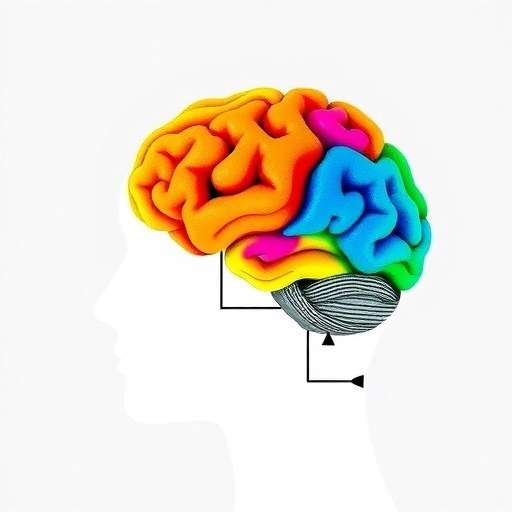A groundbreaking study from King’s College London has unveiled compelling evidence linking societal income inequality to structural modifications in the developing brains of children, potentially setting the stage for enduring mental health challenges. Published in the prestigious journal Nature Mental Health, this research marks a pivotal advance in understanding how the unequal distribution of wealth within a society can shape neurodevelopmental trajectories and influence psychological well-being.
For years, neuroscientists have understood that individual socioeconomic status influences brain maturation, but this is the first large-scale investigation to correlate broader societal income disparity—not merely household wealth—with measurable alterations in brain architecture among youth. Dr. Divyangana Rakesh, lead author from the Institute of Psychiatry, Psychology & Neuroscience at King’s College, emphasized that the implications extend beyond personal economic circumstances. “It is the societal context of income distribution—how resources are shared or concentrated—that impacts both affluent and disadvantaged children alike,” she said.
The research team examined data from more than 10,000 children aged 9 to 10 across diverse American states, harnessing information gathered by the Adolescent Brain Cognitive Development (ABCD) Study, a monumental project known for its exhaustive neuroimaging and behavioral datasets. Income inequality was quantified using a Gini coefficient-like index, where zero represents perfect equality across a population and one signals extreme inequality concentrated in a single individual. This index was mapped onto regions, allowing researchers to capture ecological socioeconomic gradients.
States such as New York, California, Florida, and Connecticut ranked at the high end of the inequality spectrum, exhibiting larger income disparities. In contrast, locations like Utah, Wisconsin, Minnesota, and Vermont displayed markedly narrower income gaps, providing a natural comparative framework within the United States. This geographic heterogeneity enhanced the study’s power to detect correlations between societal-level inequality and neurodevelopmental markers.
Advanced magnetic resonance imaging (MRI) techniques were deployed to evaluate subtle but significant changes in cortical surface area and thickness within regions tied to higher-order cognitive processing. These cerebral territories include key hubs involved in memory consolidation, attentional control, emotional regulation, and language comprehension. Moreover, functional MRI data allowed the investigation of connectivity patterns through blood-oxygen-level-dependent (BOLD) signals, revealing how networks communicating across disparate brain areas become altered under conditions of social disparity.
Findings demonstrated that children reared in states with pronounced income inequality exhibited a consistent reduction in cortical surface area and altered functional connectivity across multiple brain networks. These changes imply that societal economic structures exert a profound influence on the neurobiological substrates underpinning cognition and emotion. Crucially, these neuroanatomical alterations may represent a mechanism through which socio-structural factors translate into behavioral and psychological outcomes.
Beyond static brain morphology, the study longitudinally tracked mental health symptoms assessed through validated parent and child questionnaires at six and eighteen months post-scan. Anxiety and depressive symptoms were significantly elevated among children from more unequal environments. The data suggested that specific brain changes statistically mediated the relationship between societal income inequality and subsequent mental health difficulties, supporting a causal pathway from social environment through brain development to psychological vulnerability.
Neuroendocrine factors may underpin this cascade. Chronic exposure to social stressors, prevalent in unequal societies, can dysregulate cortisol secretion, a glucocorticoid critical in stress response modulation. Elevated and prolonged cortisol levels can exert neurotoxic effects on cortical tissue, affecting synaptic plasticity and potentially leading to the observed morphological brain changes. This stress-related framework offers a biologically plausible explanation bridging socioeconomic phenomena and neurodevelopment.
International perspectives highlight the pressing relevance of these findings. Dr. Rakesh notes that regions with stark income disparities are not confined to the United States but exist globally. For instance, in the United Kingdom, significant inequalities exist within urban centers such as London, where socioeconomic extremes coexist within close proximity. Examining these dynamics on a fine-grained scale, such as boroughs or counties, could deepen understanding of inequality’s neurological imprint worldwide.
Experts in public health and social epidemiology recognize this study as a landmark in elucidating the neurobiological embedding of social adversity. Professor Vikram Patel from Harvard University emphasized that integrating brain structural changes into socioeconomic research broadens the conceptualization of well-being. Meanwhile, Professor Kate Pickett of the University of York underscored the urgency of addressing inequality not merely as a fiscal issue, but as a determinant of population mental health, highlighting the mechanisms by which “toxic social environments” shape developing minds.
This body of evidence carries profound implications for policy. Interventions that reduce income inequality—such as progressive taxation, bolstered social safety nets, and universal healthcare coverage—may ameliorate stress-induced neural impairments. Furthermore, investment in community-building and enhancement of public infrastructure can foster social cohesion and trust, mitigating the neuropsychological burden associated with economic stratification.
In conclusion, this pioneering research converges neuroscience, psychology, and social science, revealing that unequal wealth distribution is far more than an economic dilemma—it is a catalyst for tangible changes in the developing brain with lasting consequences for mental health. As Dr. Rakesh advocates, promoting equitable societies is an imperative that resonates beyond economics into the very architecture of the human brain.
Subject of Research: The impact of societal income inequality on neurodevelopment and mental health in children.
Article Title: Society’s Wealth Gap Reshapes the Developing Brain with Lasting Psychological Effects
News Publication Date: Information not explicitly provided.
Web References: https://www.nature.com/articles/s44220-025-00508-1
References: Not provided in detail.
Image Credits: Not provided.
Keywords: Neuroscience, Society, Mental health, Human health, Neuropsychology, Developmental psychology, Public health, Health and medicine




